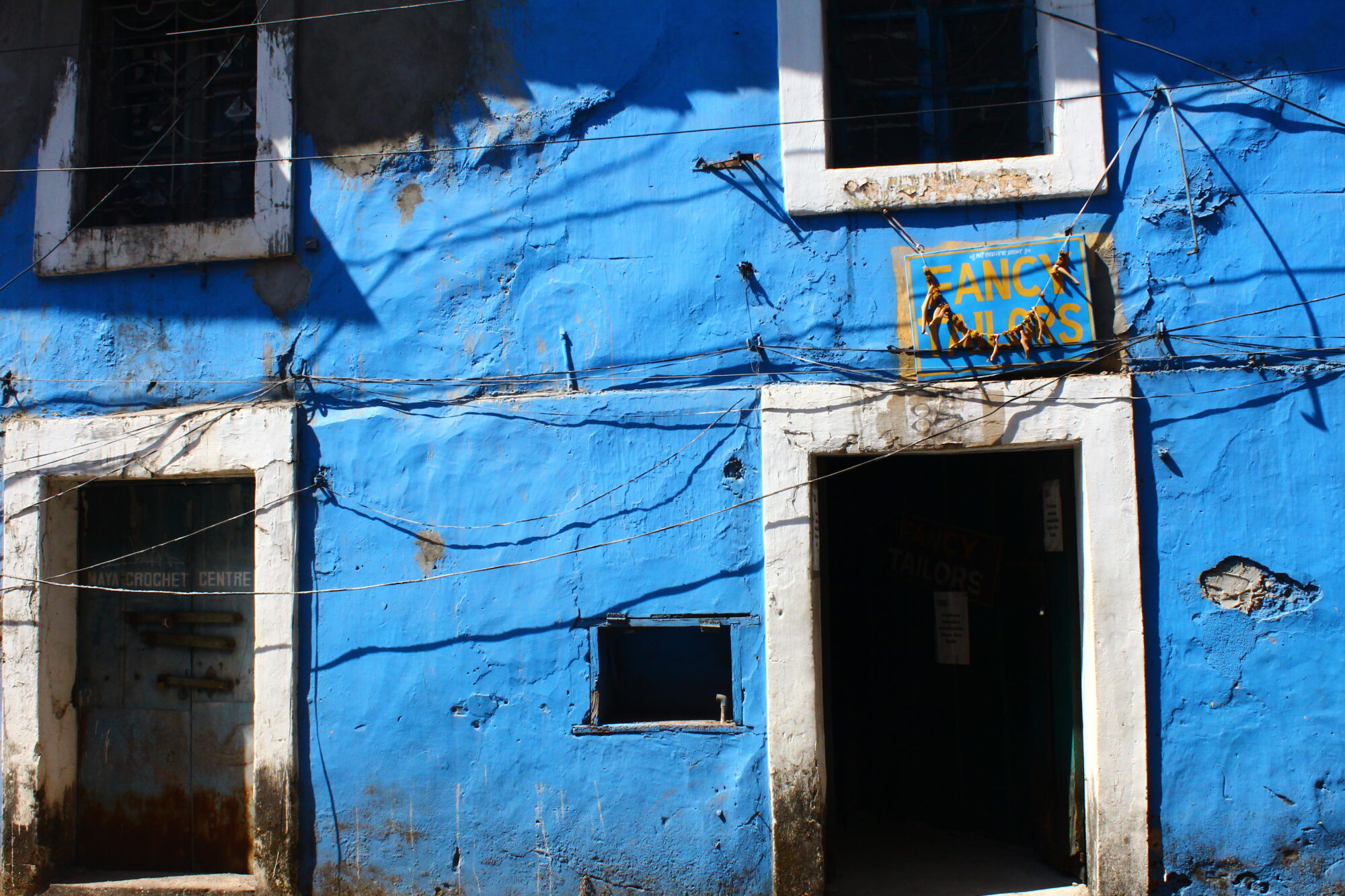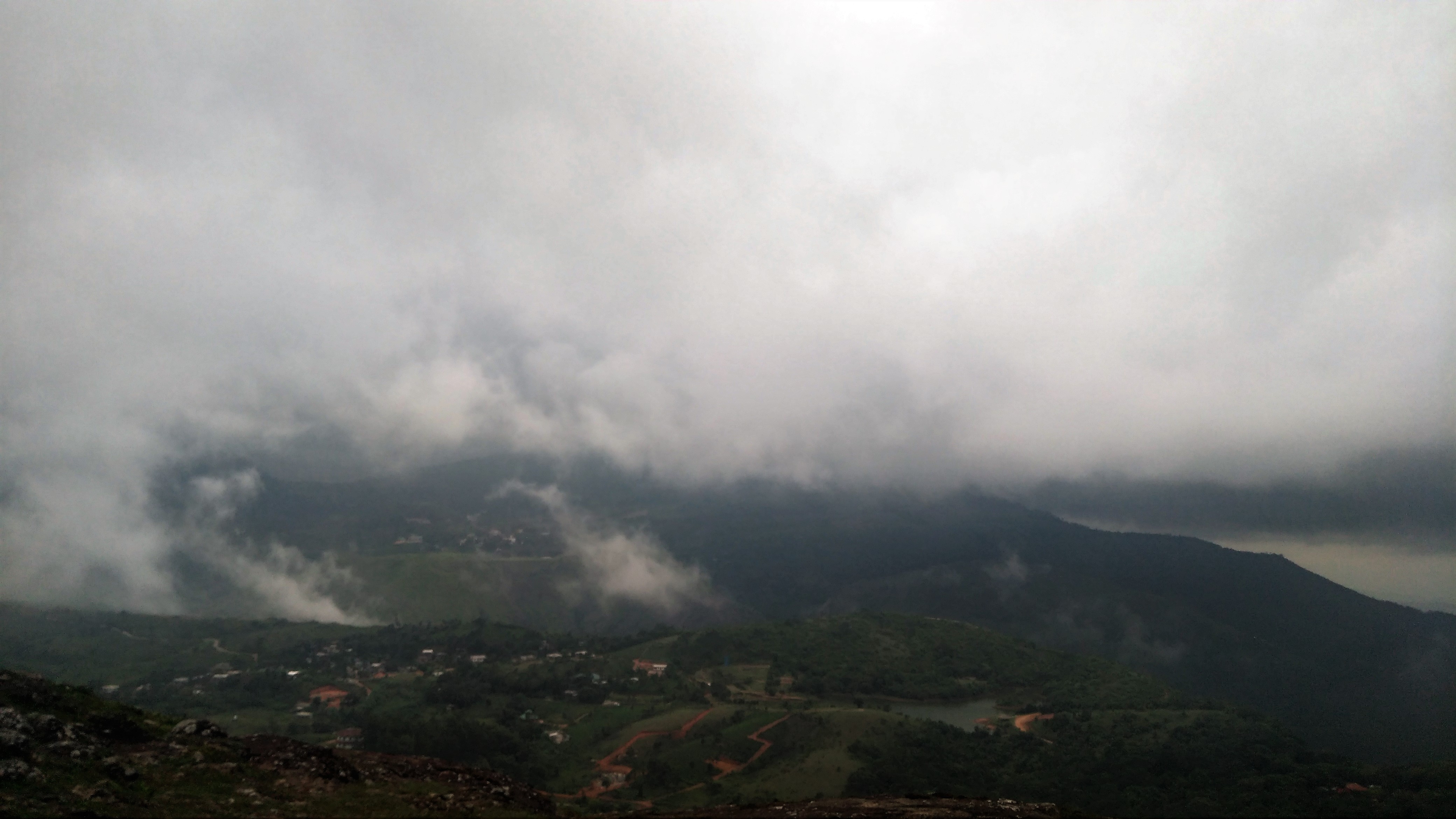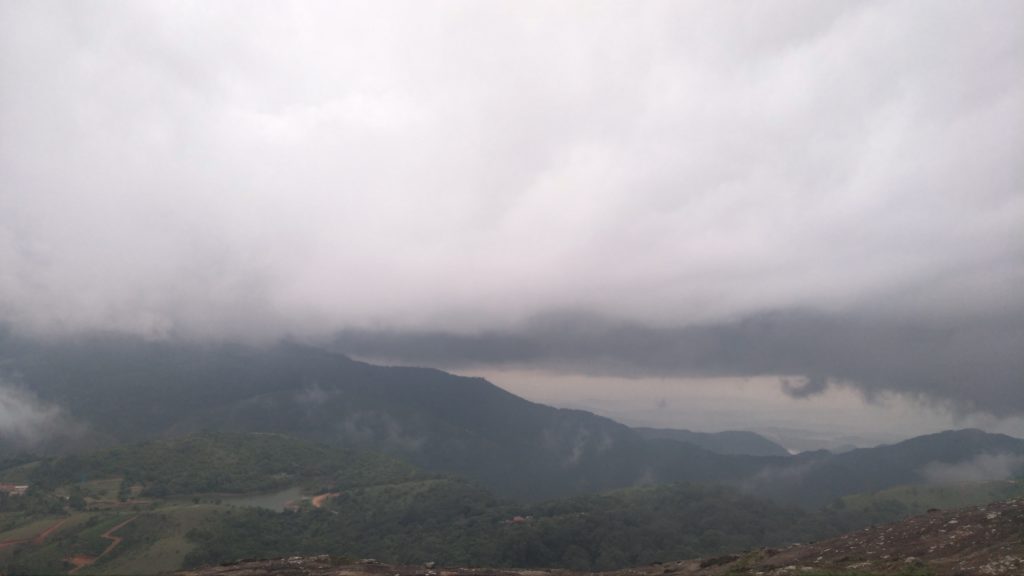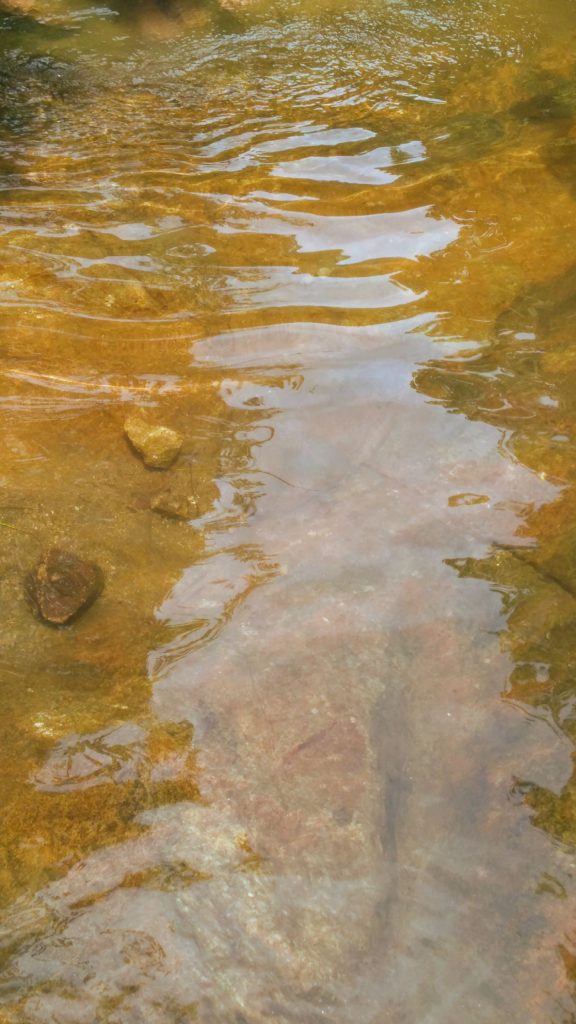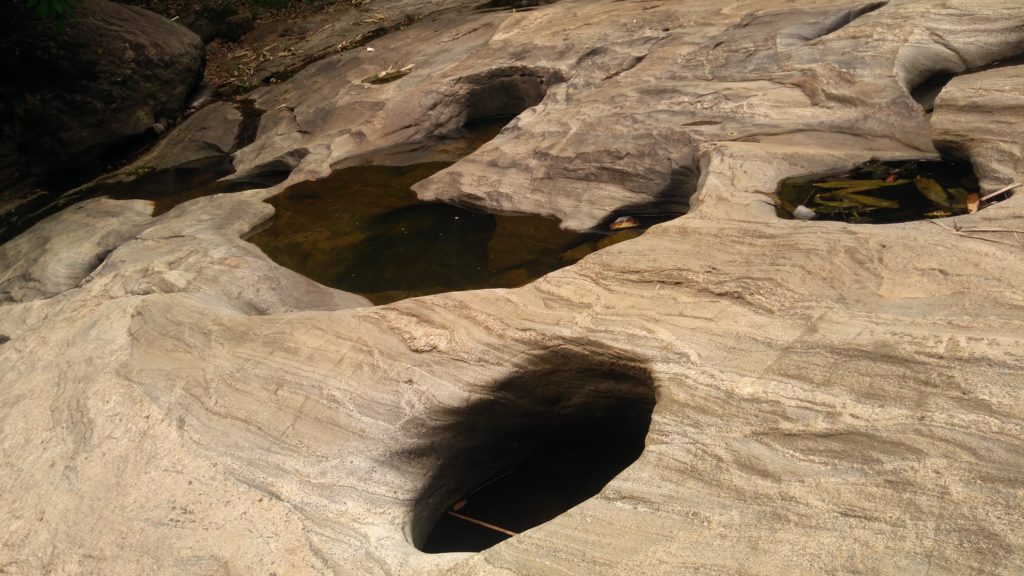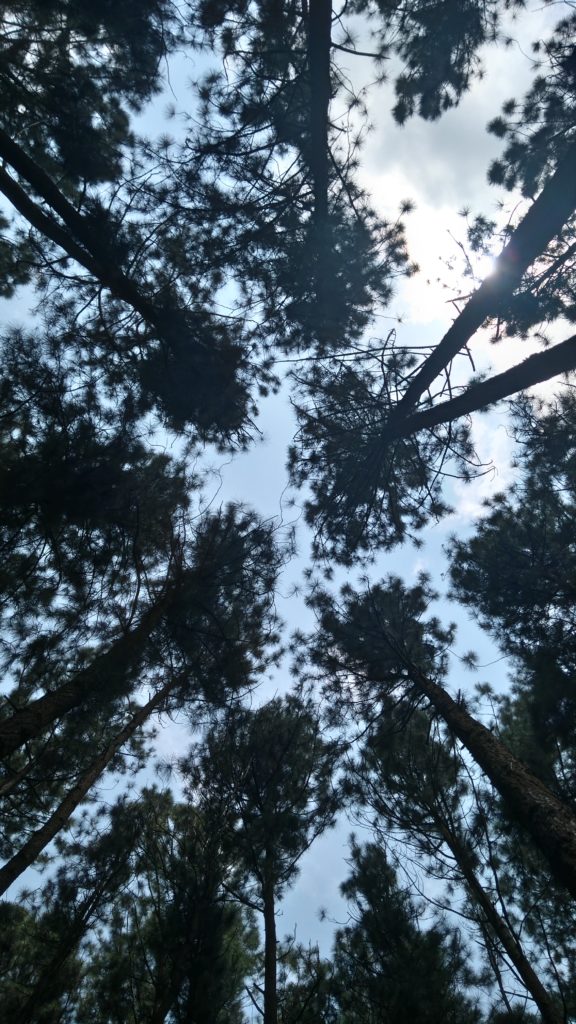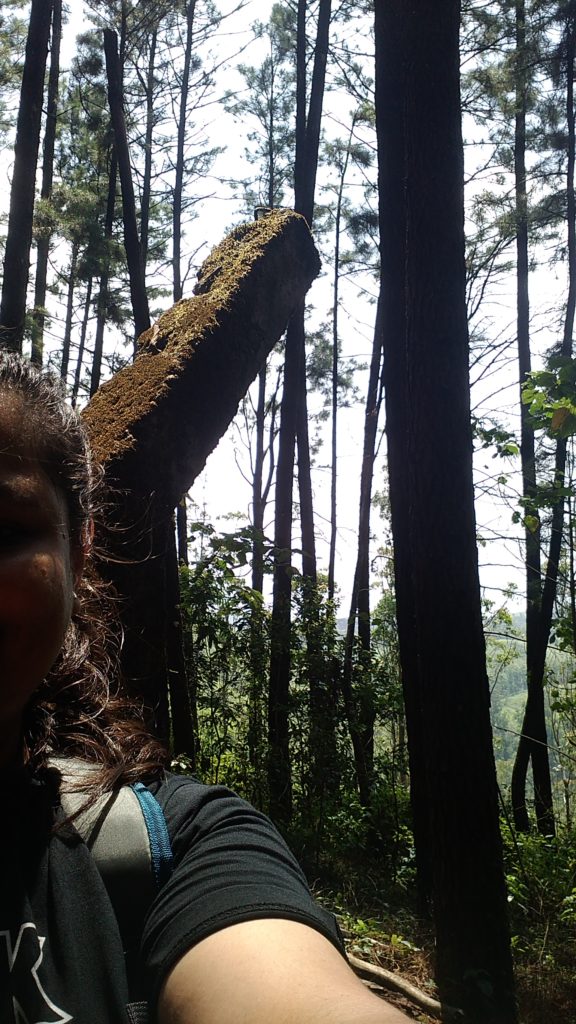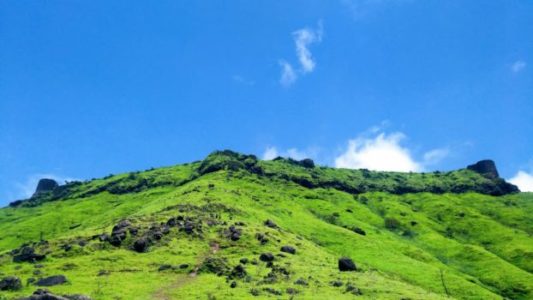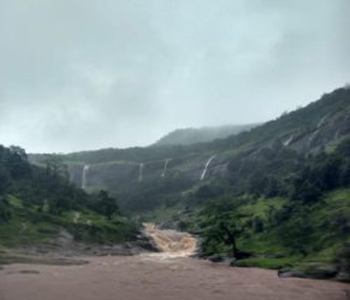Fort Rohida
One of the best advantages of being a Puneite – a combo of nature and history at your doorstep. Best example of the combo I mentioned? – undoubtedly – Forts. Pune surroundings have abundance of forts at its best. Speaking of forts, I’m gonna put a limelight upon Fort Rohida – definitely known and climbed by the trekking enthusiasts but otherwise a comparatively less crowded fort in the region.
Located about 2 hrs drive from Pune and about 4 hrs drive southeast from Mumbai is the route to the fort via a town named Bhor – a place still nourishing in its heritage since the Maratha rulers. Another accompaniment alongside the drive is the Bhatghar Dam – one of the oldest dams in India, built by the Britishers in 1927. Just as you proceed further from Bhatghar Dam, you are just 30 minutes close to the fort. 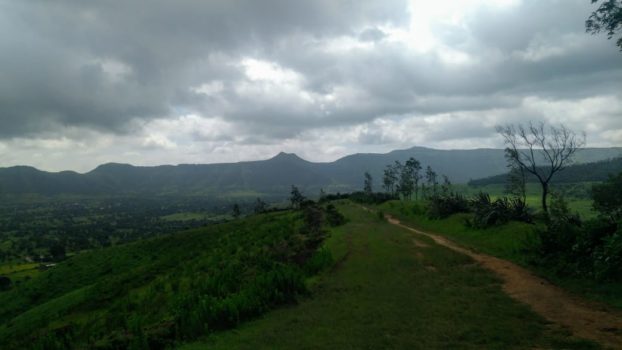
The more you leave the village settlements behind, the more the fort seems to get your attention peeking by the trees you left behind. As much as you seem to notice that the fort wants your attention, you too can’t resist flirting back! Once you reach at the foothills of the fort, the rightmost watch tower openly dares you to climb it. Taking up the challenge, you start climbing it. So you come to know that the slopes of the fort are divided into 3 parts – 1st : easily approachable as it takes just climbing. It is like a warm-up session you do before your workout. After a short warm up, the fort treats you with sparsely spreaded green landscape at your foothills and a stunning 360 degree views of the surrounding hillocks. Now you’ve got these views as your companion, you move further to the 2nd part : pretty steep and oh, extremely windy. So just letting the storm-wind pass and then moving further will make your climbing moderately easy. But not to worry, as I said – the fort has succeeded enticing you so storm-wind or not, it will help you climb it. Moving towards the 3rd and last part : a twisted and rocky slope. This might sound a bit difficult but trust me, it’s not as having been through the last two parts made the last one easier for you. The rocky climb sets your heavy breathing to normal. Also now it’s not the only rightmost watch tower, the second one shows up which had been hidden at the leftmost. It seems like the two watch towers are like dimples on the fort’s face. Oh and sure this luring smile is just for you! Now that you’ve reached the top – the old wooden door has already been opened for you.
As you’ve won in the dared challenge, the fort agrees to have a date with you and opens up to you – its building completed in 1656 by the then Mughal Ruler named Adil Shah. It also shares with you that it was basically built to keep an eye on the surrounding area including Bhor due its 360 degree vision. Taking you through its premises, it shows you about 8 watch towers and you’ve been watching only the of the them since your climb. Each watch tower has its own name and mostly referring to the name of caretaker Maratha knight. Strolling through the watch towers, it shows you the place its name was derived through – Rohidamalla Temple. Finally sitting down for a bit, as you glance up, you see 2 natural drinkable water ponds. The fort reminds to take some water to carry with you on your way back. Taking a moment, you breathe in all the soothing effect it has to offer. Filling your bottles with fresh water and mind with mesmerism, you begin to climb down. Fort has promised to drop you down and it does so. You’ve already dealt with 3 parts earlier so don’t have much to worry except setting firm feet on the grounds bending your knees a little while controlling the downward speed. Better not to play with storm-winds, you think, letting the fierce winds behind and moving downwards carefully. Finally seeing the lower landscapes at your glance you easily reach at the base. The date is over now.
Still peeking through the trees as you move apart, the fort seemed to be sadly blushing till its last peek, just as it has put its lingering effect on you. Trekking enthusiast or not, you should visit this place. Your long drive will be worth the fling!
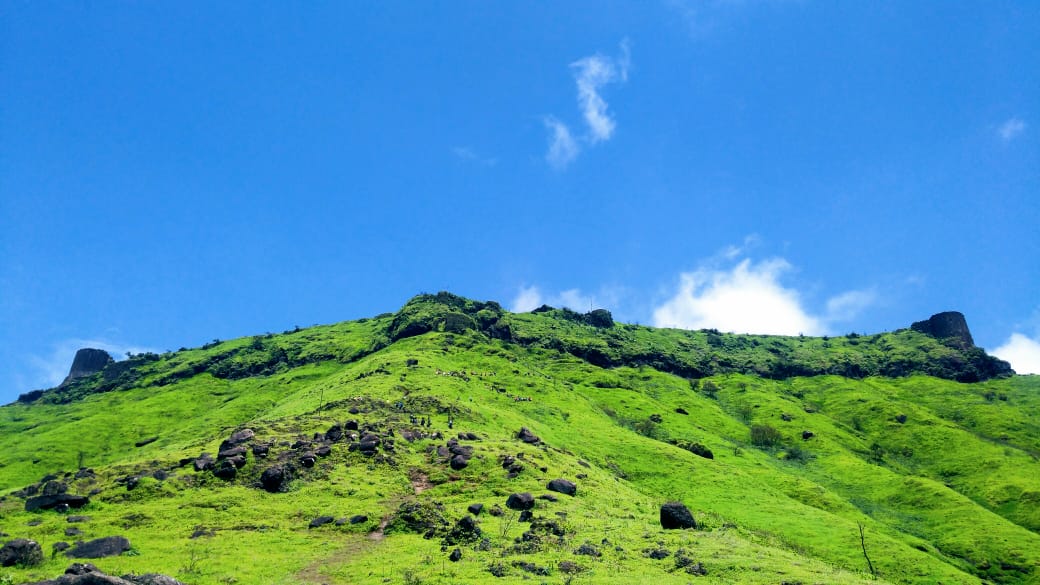
Bhorgiri
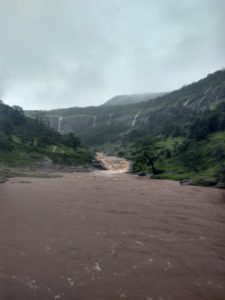
August 20th, 2018 – this time the volunteering destination was Bhorgiri – a small ghat-like hill top approximately 50 km ahead of Rajgurunagar, Maharashtra.
So, around 5.30 in the morning we gathered at the decided meeting point where the kids of the school were about to report to us (volunteers) along with their teachers. then we were to leave for Bhorgiri. We left approximately an hour later i.e. about 6.30 am.
The day was quite a rainy one as just as we reached towards the outskirts of the city, it was pretty windy and heavy drizzling. The road to Bhorgiri from Pune is straight and there are no twists or turns until the end of Rajgurunagar, though the roads are only twisted and there are no ghat sections. Just as you pass by Rajgurunagar, there is a small that comes across – ‘Wada’.
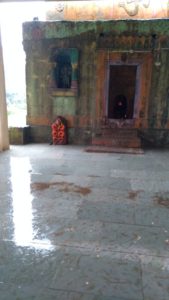 Exactly while passing through Wada, one is welcomed by amazing serenity and nature stops responding to your phone signal. From Wada up until Bhorgiri, is the most scenic route. Clear and fresh breeze, cloudy hills, lush greenery and one special guest – CHAS KAMAN DAM RESERVOIR – one of the lesser known scenic dam reservoirs in Maharashtra, it follows you all the way from Wada and drops you till the foothills of Bhorgiri. This route takes about 30 km.
Exactly while passing through Wada, one is welcomed by amazing serenity and nature stops responding to your phone signal. From Wada up until Bhorgiri, is the most scenic route. Clear and fresh breeze, cloudy hills, lush greenery and one special guest – CHAS KAMAN DAM RESERVOIR – one of the lesser known scenic dam reservoirs in Maharashtra, it follows you all the way from Wada and drops you till the foothills of Bhorgiri. This route takes about 30 km.
The near you proceed towards Bhorgiri, the more heavy winds and rains approach you. An old (yet newly-colored) temple is seen just at the foothills. The moment we got out of the bus, rain hit us and the stormy winds made us shiver. To be honest, it was more comfortable seating inside and enjoy the beautiful picture through the drive! But again, nature succeeded enticing us so we proceed our way uphill through the trail.
Just as the trail begins, the road goes straight through a small village (actually to small to be called as a village, more like a settlement). We were surrounded by mountains and mountains were treating us with cascading falls. After passing through the settlement, there were lot of paddy rice patches on both the sides of the path. Muddy patches, a number of streams were befriended by us. Also there was a big stream onto which a small dam-like bridge was constructed. It was old as the steel had become maroon-red and unabridged onto some patches, yet it was quite picturesque to see the stream flow heavily below the bridge. Moving ahead, we went towards a narrow yet heavily flowing stream.
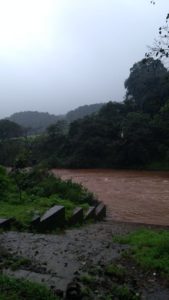 The school kids were dipping into the flowing water and playing with it. All of us got into the water as well and enjoyed being dipped and showered. From this point a small hilltop is seen with a petite cave temple. It would take us a 30 minutes hike up to the cave temple. Unfortunately we could not hike uphill as the stormy rain made the hike too flow. After enjoying some time into the stream, it was time to return downhill. After reaching downhill, we took our lunch at the temple on the foothills. The temple is exquisite with a lot of photography frames. A fierce-flowing river is the neighbor of the temple. A few number of intricate stone carvings are seen at the temple accompanied with a small and old stone well.
The school kids were dipping into the flowing water and playing with it. All of us got into the water as well and enjoyed being dipped and showered. From this point a small hilltop is seen with a petite cave temple. It would take us a 30 minutes hike up to the cave temple. Unfortunately we could not hike uphill as the stormy rain made the hike too flow. After enjoying some time into the stream, it was time to return downhill. After reaching downhill, we took our lunch at the temple on the foothills. The temple is exquisite with a lot of photography frames. A fierce-flowing river is the neighbor of the temple. A few number of intricate stone carvings are seen at the temple accompanied with a small and old stone well.
This temple is definitely recommended to photographers. Well just then, it was time to return. Rain did not hit us on our departure nor did the winds shiver us. But our minds sure were both rainy and stormy as we left back home.
Tamhini Ghat
Pune, Maharashtra
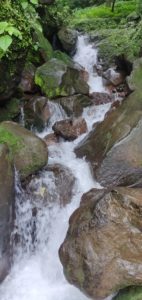
This place sure has something to it. It has this luring effect to it that just pulls me towards it and I easily get enticed by the same. I’ve been in the region for several times before and have experienced its weather that it expresses in its various moods. it the Ghat section near Lavasa, or some region encompassing Mulshi or the main Tamhini village itself. I would say, it’s one of the few places in Maharashtra known for being dramatic. This time I went there during the very beginning of September and have seen it being its moody at the most.
It was a pretty sunny day even in the early morning when I left around 6 am. Weather was same until we reached Mulshi and greeted by the large Mulshi Lake. It was moist and fresh green although no trace of rain drizzle at all. And just we crossed the Mulshi border, bright sky turned into gray and an outstretched arm-like deciduous branch was trying to give us chills by its presence as it was the only deciduous one among the other green ones. Yes it was Tamhini already, we realized, as the Mulshi Lake had waived ‘bye’ to us and Palse Waterfall waived us ‘hi’. Grayish cloudy sky with patches of blue peeking in, misty hillocks with cascading falls surrounded by and velvet green blankets wherever eyes follow.
Within approximately 5 km across the area, an artificial bridge leads to the main settlement in the region – Tamhini village. Small, red-slated picturesque houses nestled within the twisted paths looked upon us as we passed by. A temple of the regional goddess – Vinzai Devi also catches attention highlighting itself through the scenic trail. Also, a pebbled stream followed us through out the way.
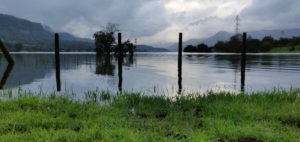 The stream is the origin of the river Mula – one of the two major river systems in Pune. The twisted road then stumbles upon a small primary school in the woods and the school directs you to the graveled path that finally leads up to the river. One can stop by there itself but we proceed even further and to move further, one has to cross the river, get to the stream on the opposite side and approach the road alongside the stream, and we did so! Getting down into the river is surely a shivering experience especially if the river is flowing too fast. The water of the river is crystal clear yet the bottom is quite unseen and judgement have to be made by touching the bottom whether it is slippery or solid. Clouds were also relaxing themselves by showering some drizzle onto us. The pebbled-bottom is mostly slippery but once you move towards the stream to the opposite side, it is shallow and the flowy water doesn’t bother you anymore. Just after crossing a few more slippery rocks, we approached to a slopy path alongside. Following the path as we moved even further, there comes the most highlighting part of the trail – an old river dam. It has this ancient charm about it that makes you feel fantasized about it. We again got ourselves dipped into the lake created by the dam. We weren’t over as yet as we went into the flow of the dam. Dipped, drained, drenched and showered – we had been wet in all of these categories till now.
The stream is the origin of the river Mula – one of the two major river systems in Pune. The twisted road then stumbles upon a small primary school in the woods and the school directs you to the graveled path that finally leads up to the river. One can stop by there itself but we proceed even further and to move further, one has to cross the river, get to the stream on the opposite side and approach the road alongside the stream, and we did so! Getting down into the river is surely a shivering experience especially if the river is flowing too fast. The water of the river is crystal clear yet the bottom is quite unseen and judgement have to be made by touching the bottom whether it is slippery or solid. Clouds were also relaxing themselves by showering some drizzle onto us. The pebbled-bottom is mostly slippery but once you move towards the stream to the opposite side, it is shallow and the flowy water doesn’t bother you anymore. Just after crossing a few more slippery rocks, we approached to a slopy path alongside. Following the path as we moved even further, there comes the most highlighting part of the trail – an old river dam. It has this ancient charm about it that makes you feel fantasized about it. We again got ourselves dipped into the lake created by the dam. We weren’t over as yet as we went into the flow of the dam. Dipped, drained, drenched and showered – we had been wet in all of these categories till now.
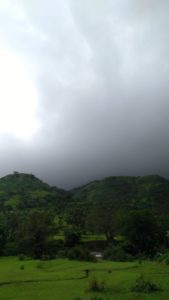
Getting to the stream, crossing the sheivering river, following the graveled path and finally approaching the twisted road and oh, a few sunbeams also accompanied us on our way back – this is the reason I described this place being moody in the beginning. So many distinguished family members are found the Tamhini Family – waterfalls, misty hillocks, cottony clouds, pebbled streams, drizzling showers, a little sunshine, a prideful free flowing river and a newly added member (or should I say the oldest amongst all?!) – Vinzai Devi Temple – all are heartiestly welcoming. Tamhini has been gelling them all since millions of years with the help of the magnificent Sahyadris. Located just about 1.5 hrs drive from Pune, Tamhini calls out for the city dwellers all year round yet its calling in the monsoon is the strongest, I suppose. The Sahyadris are looking forward to you to join their family as well!
